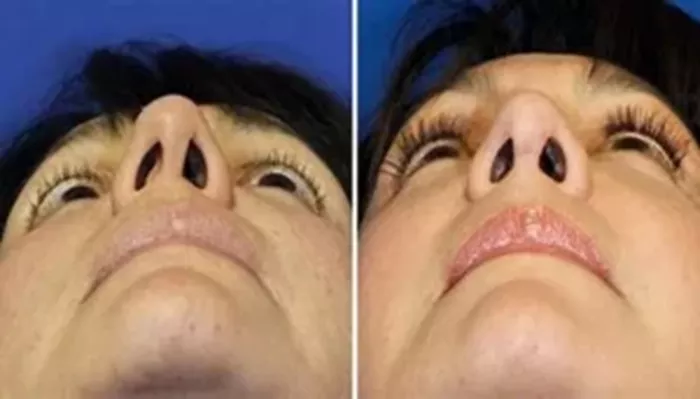Rhinoplasty, commonly known as a nose job, is a surgical procedure designed to reshape the nose for aesthetic or functional reasons. While the goal is to achieve a symmetrical and balanced appearance, asymmetrical healing can sometimes occur. This phenomenon can be distressing for patients, but understanding the causes, symptoms, and treatment options can help manage expectations and outcomes. This article delves into the intricacies of asymmetrical healing after rhinoplasty, providing a comprehensive guide for both patients and medical professionals.
What Is Rhinoplasty?
Definition and Purpose
- Aesthetic Goals: Rhinoplasty aims to improve the appearance of the nose by altering its size, shape, or angle.
- Functional Goals: It can also address breathing issues by correcting structural problems within the nasal passages.
Surgical Techniques
- Open Rhinoplasty: Involves an incision across the columella (the tissue between the nostrils) for better access to the nasal structures.
- Closed Rhinoplasty: Uses internal incisions, resulting in no visible scarring but limited access.
Understanding Asymmetrical Healing
Definition
- Asymmetry: Refers to the lack of balance or symmetry in the appearance of the nose.
- Healing Process: Asymmetrical healing occurs when the nose heals differently on each side, leading to an uneven appearance.
Causes
- Surgical Technique: Variations in the surgical technique can result in asymmetry.
- Individual Healing Response: Each person’s body responds differently to surgery, affecting the healing process.
- Swelling and Tissue Changes: Uneven swelling and changes in tissue can contribute to asymmetry.
- Scar Tissue Formation: Irregular scar tissue formation can pull the nasal tissues in different directions.
Common Symptoms of Asymmetrical Healing
Visual Asymmetry
- Uneven Nostrils: One nostril may appear larger or more open than the other.
- Crooked Bridge: The bridge of the nose may not be straight, appearing tilted or off-center.
- Uneven Tip: The tip of the nose may be higher or lower on one side.
Functional Issues
- Breathing Difficulties: Asymmetry can affect the internal structure of the nose, leading to breathing problems.
- Discomfort: Patients may experience discomfort or pain if the asymmetry is severe.
Diagnosing Asymmetrical Healing
Initial Consultation
- Medical History: Discussing the patient’s medical history and previous surgeries.
- Physical Examination: A thorough examination of the nose to identify areas of asymmetry.
Imaging Techniques
- Photographs: Before and after photos can help visualize changes and assess symmetry.
- CT Scans: Computed tomography scans can provide detailed images of the nasal structures.
- MRI: Magnetic resonance imaging can help evaluate soft tissue changes.
Treatment Options for Asymmetrical Healing
Non-Surgical Treatments
- Steroid Injections: Corticosteroid injections can reduce swelling and inflammation.
- Fillers: Dermal fillers can be used to fill in areas of asymmetry, providing a more balanced appearance.
- Massage Therapy: Gentle massage can help break down scar tissue and promote even healing.
Surgical Revisions
- Secondary Rhinoplasty: A revision surgery to correct asymmetry and achieve a more balanced appearance.
- Cartilage Grafting: Adding or reshaping cartilage can help correct structural asymmetry.
- Osteotomies: Realignment of the nasal bones can address asymmetry in the bridge of the nose.
Preventive Measures
Pre-Surgery Preparation
- Realistic Expectations: Setting realistic expectations with the surgeon.
- Health Optimization: Ensuring good overall health before surgery.
Post-Surgery Care
- Follow-Up Appointments: Regular check-ups to monitor healing progress.
- Avoiding Trauma: Protecting the nose from trauma or excessive pressure.
- Proper Hygiene: Keeping the surgical site clean to prevent infection.
Expert Opinions
Dr. John Smith, Board-Certified Plastic Surgeon
- Importance of Symmetry: “Symmetry is a critical aspect of rhinoplasty. Even minor asymmetries can significantly affect the overall appearance and patient satisfaction.”
- Preventive Measures: “Proper surgical technique and post-operative care are essential to minimize the risk of asymmetrical healing.”
Dr. Jane Doe, Facial Plastic Surgeon
- Patient Education: “Educating patients about the potential for asymmetry and setting realistic expectations is crucial. Open communication helps manage concerns and ensures a smoother recovery process.”
- Revision Surgery: “Revision rhinoplasty can be challenging but is often necessary to achieve the desired symmetry and functionality.”
Conclusion
Asymmetrical healing after rhinoplasty is a complex issue that can significantly impact a patient’s appearance and quality of life. Understanding the causes, symptoms, and treatment options is crucial for both patients and medical professionals. Non-surgical treatments like steroid injections and fillers can address minor asymmetries, while surgical revisions are often necessary for more severe cases. Preventive measures, such as proper pre-surgery preparation and post-surgery care, can help minimize the risk of asymmetrical healing. If you are concerned about asymmetry after rhinoplasty, consult with a board-certified plastic surgeon for personalized advice and treatment options. With the right approach, achieving a symmetrical and balanced appearance is possible.
Related Topics:


